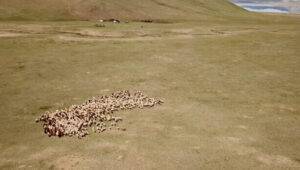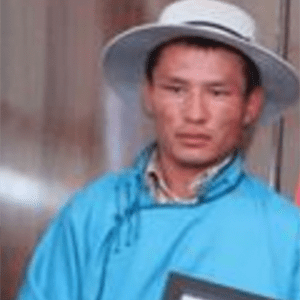
“The land is the soil of the nation.”
Ancient Mongolian Quote
HOW WE ARE PROTECTING RANGELANDS
The SFA Animal Fibre Standard ensures that rangelands are managed in a way that minimises the risk of pasture degradation and protects wildlife. This is done by promoting collective action and a return to traditional land management practices by herding communities. The standard is based on each herding community coming up with a rangeland management plan to improve pasture condition and conserve native wildlife. The plan must state clear boundaries for communal grazing and identify areas for reserve pasture.
Herders state clear boundaries for their grazing area
Herders assess their grazing area
Herders identify rotational grazing movements to avoid overgrazing
Herders identify areas for wildlife protection and habitat restoration
WHY IT MATTERS
Rangelands are the backbone of herders’ livelihoods. Without them, hundreds of thousands of people would lose their primary source of income and support, threatening not the viability of their livelihoods and that of the cashmere industry, but also thousands of years of cultural heritage.
Rangelands support a unique and diverse ecosystem, including native wildlife and plants that provide a suite of vital ecosystem services. Overgrazing and degradation can lead to desertification, which can have long-term negative impacts on the land and the people who depend on it. Therefore, protecting rangelands is essential for the well-being of the people and the environment.
Desertification
Desertification in cashmere producing regions is not always permanent. Desertification is a process that occurs when dryland ecosystems are degraded, typically as a combination of human activities, such as overgrazing and deforestation, and the impacts of climate change. While the process of desertification can take many years to occur, it is not always permanent and can be reversed through the adoption of sustainable land use practices. Some of the measures that can be taken to reverse desertification in Mongolia and China include reducing stocking density, rotation of grazing pastures, allocation of reserve pastures, and taking measures to protect local wildlife. With the right approach, it is possible to reverse the effects of desertification.

“I feed salt to the wild mountain sheep and mountain goats because we don’t have any of it in our area. I also feed them grass during the harsh winters.”
SFA Young Herder of the Year 2019 – Ganzorig O.
HOW CASHMERE PRODUCTION IMPACTS RANGELANDS IN DIFFERENT REGIONS
Cashmere production practices vary considerably between the two major cashmere producing nations. Mongolian herders are semi-nomadic, shifting between seasonal campsites and grazing their herds on open, unfenced and communally-owned rangelands. In contrast, across the border in China, herders are no longer nomadic and now graze their goats on fenced pastures, which are better described as ‘cashmere farms’. On these farms, the grazing pasture is not always sufficient to last the full year and goats are often brought indoors and fed hay over the winter months. While Mongolian cashmere is typically harvested by hand using combs, in China the use of electrical shears is more common.

